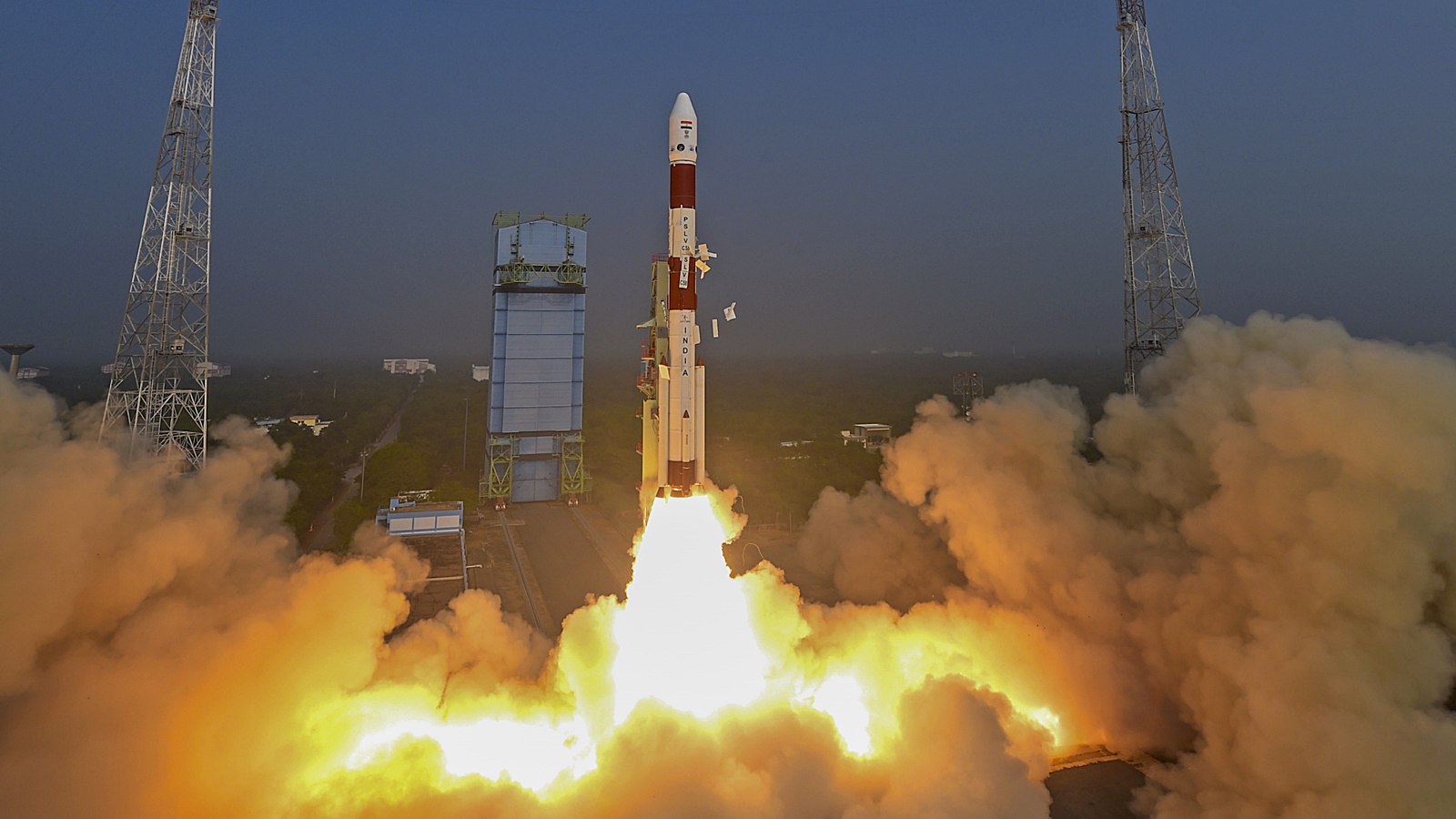After a journey of 127 days, the Aditya-L1 spacecraft, India’s first solar mission, will enter the final orbit today afternoon, its desired destination from where it will make observations of the Sun for the next five years.
The spacecraft has to get into an orbit around the L1 (Lagrange 1) point, one of the five locations in the Earth-Sun system where the gravitational effects of the two roughly cancel each other out. It is a relatively stable point for a spacecraft to be parked, and make observations of the Sun.
However, getting into the orbit around L1 is not the same as attaining an orbit around any other planetary body, and is being considered the most important challenge in this mission. The spacecraft will spend the rest of its mission life “orbiting around L1 in an irregularly-shaped orbit in a plane roughly perpendicular to the line joining the Earth and the Sun,” an ISRO scientist said.
“First, acquiring the orbit around L1 is a challenge itself and then maintaining the orbit is also another task,” Dr M Annadurai, former ISRO scientist and project director on the Chandrayaan 1 mission, said.
“It is not like an orbit around other planetary bodies. There are three dimensions to the orbit while other orbits around a planet are two dimensional — equator or polar. The gravitational effects of both the Sun and the Earth play a role and there is constant pulling and pushing,” he added.

Lagrange Points are relatively stable positions but not entirely free from pulls and pressures. However, these are still preferred locations for space missions intending to observe and study the Sun.
“These points in space for a two-body system such as Sun and Earth can be used by the spacecraft to remain at these positions with reduced fuel consumption,” ISRO said in a statement.
“Technically at Lagrange point, the gravitational pull of the two large bodies equals the necessary centripetal force required for a small object to move with them. For two-body gravitational systems, there are a total of five Lagrange points, denoted as L1, L2, L3, L4, and L5. The Lagrange point L1 lies between the Sun-Earth line,” the space agency said.
“The strategic placement at the L1 Lagrange point ensures that Aditya-L1 can maintain a constant, uninterrupted view of the Sun. This location also allows the satellite to access solar radiation and magnetic storms before they are influenced by Earth’s magnetic field and atmosphere. Additionally, the L1 point’s gravitational stability minimizes the need for frequent orbital maintenance efforts, optimizing the satellite’s operational efficiency,” ISRO has stated.
“Aditya-L1 will stay approximately 1.5 million km away from Earth, directed towards the Sun, which is about 1 per cent of the Earth-Sun distance. The Sun is a giant sphere of gas and Aditya-L1 would study the outer atmosphere of the Sun. Aditya-L1 will neither land on the Sun nor approach the Sun any closer,” ISRO said.
A suite of seven payloads on Aditya L1 are expected to provide crucial information to understand the problems of coronal heating, Coronal Mass Ejection, pre-flare and flare activities, and their characteristics, dynamics of space weather, study of the propagation of particles, and fields in the interplanetary medium.
“Using the special vantage point of L1, four payloads will directly view the Sun and the remaining three payloads will carry out in-situ studies of particles and fields at the Lagrange point L1,” ISRO said.
The Aditya L1 mission was launched on September 2, 2023, by the Polar Satellite Launch Vehicle (PSLV-C57) from the Satish Dhawan Space Centre (SDSC)at Sriharikota.
After a flight duration of 63 minutes and 20 seconds, the spacecraft was successfully injected into an elliptical orbit of 235 x 19,500 km around the Earth. The spacecraft underwent four earth-bound orbital manoeuvres before it was placed in the transfer orbit towards the Lagrange point L1 on September 19, 2023. On October 6, 2023, ISRO carried out a trajectory correction maneuver on the spacecraft to keep it on course for L1.
“It was needed to correct the trajectory evaluated after tracking the Trans-Lagrangian Point 1 Insertion (TL1I) manoeuvre performed on September 19, 2023. TCM ensures that the spacecraft is on its intended path towards the Halo orbit insertion around L1,” ISRO said. The trajectory correction manoeuvre which involved firing on the onboard engines of the spacecraft for 16 seconds was deemed necessary to ensure the spacecraft reaches its correct location in deep space to ensure that it slots into an orbit around the L1 point.
Unlike missions to the moon which take about three weeks to cover the 384,400 km distance to the moon – once the spacecraft is put on a trajectory to the moon – the deep space missions to Mars (distance of 225 million km) and the Lagrangian Point 1 (distance of 1.5 million km) take several months (Mars around 11 months and L1 around four months). The longer distances that have to be covered require mission planning to incorporate trajectory correction plans using orbit determination calculations to ensure the spacecraft remains on course for its destination in deep space.
Aditya-L1 is the first Indian space-based observatory launched to study the Sun from a halo orbit around the first Sun-Earth Lagrangian point (L1).
© The Indian Express Pvt Ltd
First uploaded on: 06-01-2024 at 09:10 IST

Shambhu Kumar is a science communicator, making complex scientific topics accessible to all. His articles explore breakthroughs in various scientific disciplines, from space exploration to cutting-edge research.




